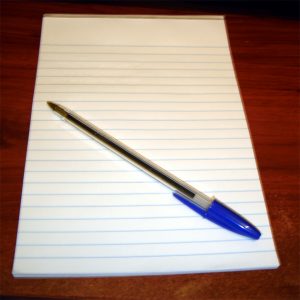 If you’ve read the first blog in this series you’ll be focused on writing a book that actually has a market. So how do you go about putting it together?
If you’ve read the first blog in this series you’ll be focused on writing a book that actually has a market. So how do you go about putting it together?
If you’re a professional writer it shouldn’t be a problem, however, I’ve met a few people who have no problem writing business material, but, when faced with a blank screen and a book to write, get that well known ailment ‘writer’s block’.
Being a systems freak I long ago worked out how to eliminate this – and it’s not just because I’ve got that kind of mind. It is a process that ensures you have all your ducks lined up before you begin.
Step one: Get a piece of paper and draw a mindmap showing your chapters, give them a name relating to the subject matter (you can always change the name later, but it helps you to focus). Around each chapter heading add the subheadings that you think should be in that section of the book. If you’re writing fiction you can use this to create your synopsis for a potential publisher.
Step two: Take a fresh piece of paper and mindmap each chapter in the same way. If you’re writing non-fiction include anecdotes, case studies, examples, things to do (if it’s that kind of book), books you want to refer to and any other bits of information that contribute. If you’re writing fiction you’ll need to plot out the events and introduction of characters.
Step three: Create your chapter ‘recipe’. This is the structure that will underpin each chapter so that your reader feels comfortable as they move from chapter to chapter. If you’re going to start with a quote or a story, then do that for every chapter. Have a style and structure that you can maintain throughout the book. This is less of an issue with fiction, but don’t ignore this step, it’s a good discipline to consider how to put your story together – do you end each chapter on a cliffhanger or tie up the ends for that part of the story?
Step four: Do any reading or research you need to do for your chapters and add the information you’ve gathered to your chapter maps. For fiction writers this will include developing your characters and researching locations you plan to use.
Step five: Take each chapter content page from step two and fit it into the recipe you’ve created in step three. You should end up with an ordered list of headings for each chapter.
Step six: Take a chapter list and start writing, following the order of subjects and writing about each one as you come to it. If you’re writing a fiction book, you probably need to start at the beginning. If you’re writing non-fiction you can start with whichever chapter you feel most comfortable about.
If you follow these steps you will find that your book progresses without the anguish of ‘I can’t think what comes next!’ It doesn’t mean you can’t move things about later on, but at least all the information will flow well and give you a great first draft to work on.
